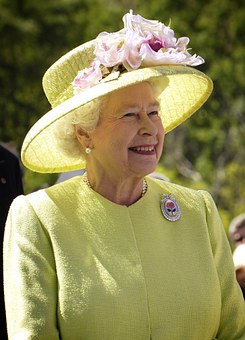Regius professorships
A regius professor is literally a king’s professor, and holds a chair that, historically, was endowed by a monarch. Regius professorships are generally considered the highest status of professorship in the UK – in his paper, ‘What does it mean to be a professor?’, Malcolm Tight suggests that regius professorship ‘must, presumably, be near the top of the status pole’ (Tight, 2002). There are currently around seventy regius professorships in the UK, distributed across the country’s universities. Trinity College Dublin boasts some historic regius professorships because at the time when its regius chairs were endowed what is now the Republic of Ireland was part of the UK. With their historic advantage, the ancient universities hold the biggest share of regius professorships, but some newer universities have, in recent decades, also manged to secure regius professorships.
How has regius professorship evolved over time?
When they were first founded in the 15th and 16th centuries, regius professorships were endowed by the monarch, which meant that the crown paid the professors’ stipends. Regius professorships are now created by the government, not the monarch, and it is the university holding a regius professorship that must cough up the incumbent’s salary and any associated costs. So, in the 21st century, they are a status symbol for a university that it willingly pays for, to enhance its prestige and reputation.
The process of appointing a regius professor has also evolved over the centuries from one based on patronage, and that perpetuated privilege, to a more transparent process. The most recently created regius professorships represented an initiative on the part of the UK government to recognise and celebrate milestones in Queen Elizabeth II’s reign: her golden jubilee and her 90th birthday.

Queen Elizabeth II
To mark Elizabeth II’s 90th birthday in 2016 a competition was launched in 2015 for universities across the UK to bid for regius professorships (which were offered as marks of prestige and status only; funding them was to be the responsibility of the successful bidders). Whilst, as a key element of the competition, participating universities were to propose their disciplinary field(s), the intended nature of these professorships was made explicit in the narrative announcing the initiative: ‘A Regius Professorship is a rare honour granted by the Sovereign to recognise research excellence’. It was also implicit in the clear direction given on which kinds of universities would be serious contenders: ‘Applications for the new Regius Professorships are invited from all universities with excellent records of relevant academic research’ (UK government, 2015, emphases added).
Less than three years before the launch of the 2016 regius chair initiative there had been a very similar one, to mark Elizabeth II’s golden jubilee in 2013. But what is particularly interesting is that in the accompanying narrative issued by the UK Cabinet Office, teaching quality as well as research quality were highlighted as key indicators of universities’ suitability to hold regius professorships (UK government, 2013): ‘A Regius Professorship is a rare privilege, with only two created in the past century. It is a reflection of the exceptionally high quality of teaching and research at an institution’. Representing the Conservative-Liberal Democrat coalition government of that time, the then Minister for Universities and Science, David Willetts, is quoted in the post-competition Cabinet Office news item: ‘Together, the successful applications demonstrated an exceptionally high level of achievement in both teaching and research’ (emphases added).
Between 2013 and 2015, then – and reflecting a change of government that occurred between these two dates – the emphasis seems to have shifted from teaching and research to just research, implying that a regius professorship should be seen as principally research-focused.
